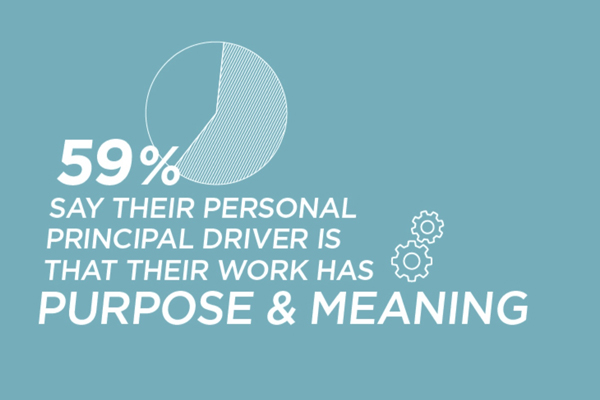Korn Ferry has identified equality, inclusion and transparency as some of the key emerging global talent trends for 2020.
The research is based on input from talent acquisition, development and compensation experts from across the globe, backed by research carried out throughout this year, by the global talent consultancy.
Transparency regarding pay is certainly a hot topic. The question ‘How much do you make;” used to be taboo, but changing social norms have made pay transparency ‘the way of the future’, says Korn Ferry. Its recent survey of HR professionals found that nearly one-quarter of respondents (24%) think it’s appropriate to share their salary information with colleagues, while more than a third (37%) believe that it’s more acceptable to talk about pay today than it was five years ago.
However, that’s not the only way pay transparency is playing out around the world. In an effort to promote pay equity, more than 80 countries have passed equal-pay-for-equal-work legislation. Of those countries, more than a quarter have a mandatory reporting requirement, confirms the consultancy. There is also a much more concerted effort to make executive salaries transparent, with the CEO pay ratio ruling in effect in the US and the Shareholder Rights Directive set to impact the European Union in 2020, it adds.
AUTHENTIC EMPLOYER OF CHOICE
With these trends in mind, it’s not surprising that 75% of HR professionals say transparency regarding pay and rewards will become even more important in the coming year. HR and pay teams are strategising on how to create equitable pay programmes, more clearly articulate the principles behind those programmes, and help managers communicate with employees who may feel they are undercompensated, says Korn Ferry.
However, a competitive pay package alone won’t be enough to attract the best and brightest, it points out. Experts say the trick to becoming an employer of choice is to be ‘authentic and transparent’. As a result, many companies are stepping back to understand the culture and what matters to employees, often gauging the pulse of worker sentiment via short surveys and other listening tools. Firms are also increasingly creating comprehensive, multi-channel initiatives, such as apps, events, videos and chatbots, to entice a wide range of candidates with their unique employer brand proposition, confirms the consultancy.

EMPLOYEE CARE & AI
When considering high-volume, fast turnaround hiring efforts, it’s often impossible to keep every candidate in the loop, so companies will increasingly turn to sophisticated AI tools/programmes, such as chatbots. This is ‘significantly transforming’ the candidate experience, enhancing engagement and elevating overall satisfaction, according to Korn Ferry. Existing employees will also increasingly turn to chatbots to apply for new roles within their organisation, instead of trying to work up the courage to ask HR or a boss about new opportunities.
What’s more, enlightened companies are already offering ‘a day in the life’ virtual simulations that allow candidates to see what a role would entail, which can either enhance interest or help candidates self-select out of the process. This also helps employers understand if the candidate would be a good fit, based on their behaviour during the simulation, says the consultancy. In fact, 78% HR professionals say that it will be vital to provide candidates with these ‘day in the life’ type experiences in the near future, according to Korn Ferry’s recent research.
CRACKING THE D&I CODE
Organisations must also ‘crack the D&I code’ if it’s to succeed in attracting and retaining talent, adds Korn Ferry. Many companies have ‘come a long way’ in identifying and addressing unconscious bias toward specific employee demographics, such as women, racial and ethnic populations, the LGBTQ+ community and others, the consultancy points out. While helping people become more aware of their own unconscious bias is important for creating greater inclusion, it’s not enough to bring about lasting transformation.
That’s why more and more organisations are addressing ‘structural inclusion’ – an approach that looks for ways conscious and unconscious biases have been embedded into the talent systems themselves, contributing to inequities in pay, promotions, representation, visibility, access and opportunity, explains Korn Ferry. To surface these inequities, companies are doing de-biasing audits of their processes, building inclusive leadership capabilities in their executive and senior management ranks, and creating greater accountabilities for people managers in achieving greater D&I. There’s a clear business case for focusing on the issue, according to its recent research on diversity, which reveals that nearly two-thirds (63%) of executives say their D&I programmes help with employee retention, while 76% say D&I initiatives lead to greater innovation.
SKILLS & RESKILLING
Although unemployment is at historically low levels in most parts of the globe, companies are beginning to take a more cautious approach to hiring and compensation practices, confirms Korn Ferry. Hiring for roles that have a direct impact on the bottom line, such as R&D and sales, is being prioritised over traditional service roles like accounting. Additionally, global digital transformation means that tech skills are in high demand in just about every industry, which is leading to more open positions and enhanced compensation for these roles. Many companies are hiring people who have niche technical skills, even if they don’t have an immediate role available for them, it adds.

Reskilling existing staff is also becoming vital as employers are aware that many of the skills that are critical today may become irrelevant tomorrow. Korn Ferry’s global survey on the topic shows that more than a quarter (27%) say reskilling workers is their top priority. To help enhance employee capabilities and increase retention, formalised, ongoing hard-skill (such as programming) and soft-skill (such as agility) trainings are becoming the norm. This isn’t just about tech workers, according to the consultancy. Everyone from sales to HR needs to be trained to meet the demands of tomorrow.
CONTINUOUS TRANSFORMATION
Although reskilling workers is important, it’s not enough, adds Korn Ferry. Companies are moving towards continuous transformation, not just one-time change initiatives. Rather than just focusing on people development, they are redesigning jobs and structures for more agility and scalability.
Transformation must now occur at every level of the organisation, says the consultancy. Middle managers and even entry-level employees are being given more control in how to structure their own work, as well as the work of their teams and colleagues.
Given the high pace of CEO turnover during the past three years, both planned and unplanned, boards of directors are taking more proactive and tactical steps to understand the depth and breadth of the executive and enterprise leadership pipeline to enable thoughtful, strategic transitions when needed. Strategic review of top leadership talent has become critically important, and many ‘best-in-class boards’ have formed ‘compensation and talent committees’ to ensure this review is thoroughly approached. There is also a parallel desire to address pay equity and pay transparency, reveals Korn Ferry.
What this process does is transcend pure CEO succession into CEO ‘progression’ whereby planning for senior-level roles becomes an ongoing, strategic process. In addition, approximately, 25% of public board directors are older than 70, meaning that significant turnover is in process. This succession activity has contributed to a greater level of diversification in the boardroom, which is anticipated to continue. This is also leading boards to measure their overall effectiveness and chemistry as a team on a regular basis.
PURPOSE-DRIVEN LEADERSHIP
Staff increasingly want their work to have purpose and meaning, so ‘purpose-driven leadership will become increasingly important. Korn Ferry’s survey on purpose-driven leadership found that nearly two-thirds of respondents (59%) said that their personal principal driver at work is the belief that their work has purpose and meaning. So, instead of trying to energise people around an analytical strategy, leaders need to create an agile and adaptable culture where teams trust each other and understand the purpose of the work: ‘why’ we exist, who we are as an organisation, and what we stand for.

Purpose-driven leadership isn’t just good for the individual, it’s critical for the bottom-line, asserts Korn Ferry. The vast majority of survey respondents (96%) agree that companies see a long-term financial benefit when they make a strong commitment to purpose-driven leadership.
Some companies are taking this concept one step further by rewarding workers whose individual contributions help achieve the greater purpose of the organisation. From a leadership perspective, there is an emerging trend to include ESG (environmental, social and governance) metrics in CEO compensation packages, instead of just financial metrics. These could take the form of rewarding for emissions reductions or human rights initiatives, suggests Korn Ferry.
Commenting on the emerging global talent trends, Byrne Mulrooney, Chief Executive Officer, Korn Ferry RPO, Professional Search and Korn Ferry Digital, stated: “The workforce is rapidly evolving. In the coming year we will see an even greater focus on transparency, agility, culture and purpose-driven leadership. Employers are also becoming more flexible in how they embrace technology, attract and reward employees, and create ongoing transformation at all levels of the organisation.”





































